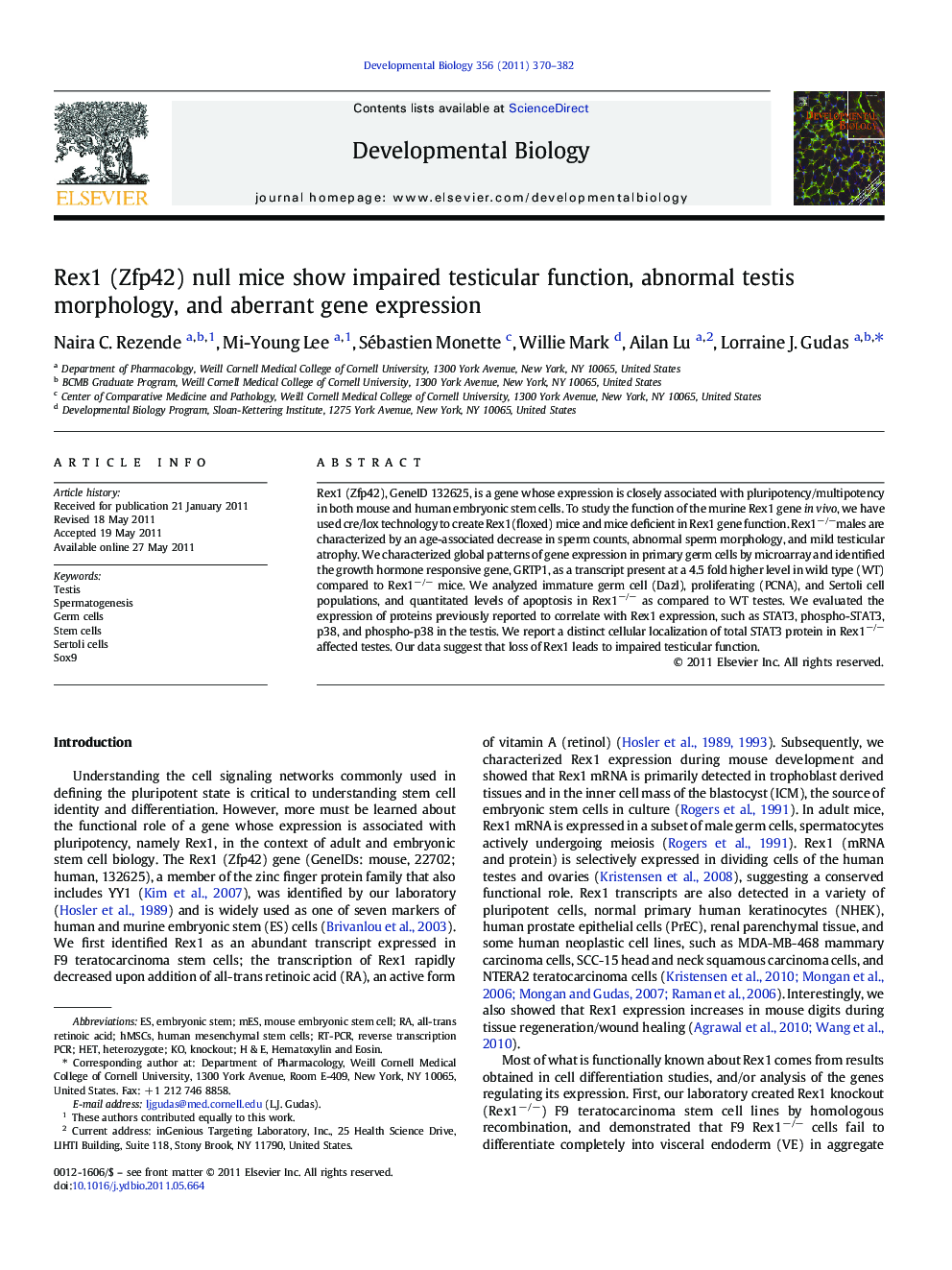| کد مقاله | کد نشریه | سال انتشار | مقاله انگلیسی | نسخه تمام متن |
|---|---|---|---|---|
| 2173563 | 1093737 | 2011 | 13 صفحه PDF | دانلود رایگان |

Rex1 (Zfp42), GeneID 132625, is a gene whose expression is closely associated with pluripotency/multipotency in both mouse and human embryonic stem cells. To study the function of the murine Rex1 gene in vivo, we have used cre/lox technology to create Rex1(floxed) mice and mice deficient in Rex1 gene function. Rex1−/−males are characterized by an age-associated decrease in sperm counts, abnormal sperm morphology, and mild testicular atrophy. We characterized global patterns of gene expression in primary germ cells by microarray and identified the growth hormone responsive gene, GRTP1, as a transcript present at a 4.5 fold higher level in wild type (WT) compared to Rex1−/− mice. We analyzed immature germ cell (Dazl), proliferating (PCNA), and Sertoli cell populations, and quantitated levels of apoptosis in Rex1−/− as compared to WT testes. We evaluated the expression of proteins previously reported to correlate with Rex1 expression, such as STAT3, phospho-STAT3, p38, and phospho-p38 in the testis. We report a distinct cellular localization of total STAT3 protein in Rex1−/− affected testes. Our data suggest that loss of Rex1 leads to impaired testicular function.
Research highlights
► A knock-out mouse model of the stem cell transcription factor Rex1 (Zfp42).
► Rex1 (Zfp42) null mice display testicular atrophy.
► Early/late spermatids are the most affected population in Rex1−/− mice.
► Potential mechanisms behind the phenotype have been analyzed.
Journal: Developmental Biology - Volume 356, Issue 2, 15 August 2011, Pages 370–382